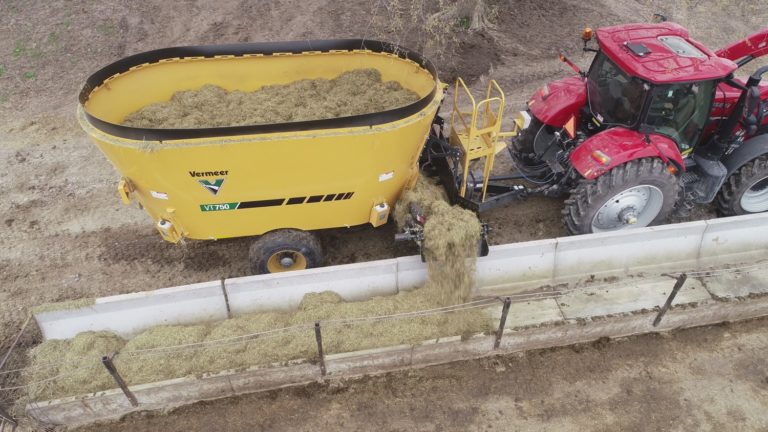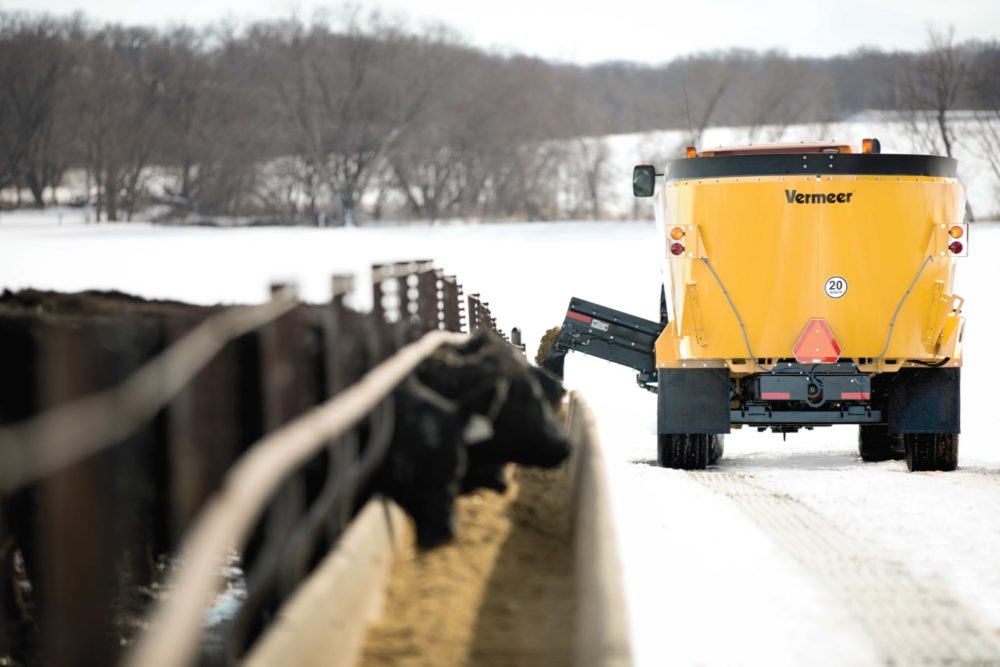
You can’t access DDGS. Now what?
March 2022
Explore your options when DDGS supply is low.
After years of a turbulent ethanol industry causing shortages of dry distiller grains with solubles (DDGS) and driving up prices, many cattle producers have struggled to economically feed their cattle. Finding alternative ingredients for feed rations to replace this ethanol co-product has proven to be a challenge, especially since there is not an option for a complete replacement for DDGS in the ration. So, what can you do?
First, determine which alternative is the best option for you based on commodity price, availability and related transportation costs. It also depends on the class of livestock you’re feeding and your desired performance. Consider the below options:
Corn silage
Corn silage has a high nutritive value and can be a top substitute for DDGS, especially when feeding feedlot cattle. In addition, it’s high in energy and an economical source of roughage. Corn silage also adds moisture content, which makes it susceptible to spoilage losses. Therefore, storing corn silage properly (carefully packed and sealed) is key to extending its shelf life. It must be stored properly — packed well and carefully sealed.
Sunflower silage
An alternative to corn silage, sunflower silage can help extend your forage supply and control feed costs. It is lower in energy than corn silage, but contains slightly more protein, fat and calcium on a dry matter basis.
Soybeans and soybean byproducts
For dairy cattle, soybeans and their byproducts can provide various nutrients, including essential amino acids. Also, depending on how they are processed, they can deliver benefits such as: high-quality protein; degradable, undegradable and soluble protein; fat and fiber; and energy. This makes them suitable for developing heifers as well as growing and finishing rations. Soybean meal is an option for young calves and growing cattle, although it doesn’t promote muscle growth as well as DDGS.
When feeding raw soybeans, you must consider that they do contain urease, which causes urea to break down into ammonia. Feeding raw soybeans to cattle who are receiving non-protein nitrogen (urea) from either a supplement or feed could cause ammonia toxicity and lead to death. Another challenge with feeding soybeans is that damaged soybeans can become rancid quickly, especially in warmer weather.

Wheat middlings (wheat midds)
Wheat midds contain high energy due to their highly digestible fiber, making them an option for all classes of cattle. There are few problems associated with their use, and their palatability helps make is easier for cattle to consume them. When compared to DDGS, wheat midds have only one-third of the oil (fat) contents, which means feeding higher levels decreases the energy density of the finishing diet.
Alfalfa
When available, alfalfa can be a good source of roughage and protein for cattle. Alfalfa is sensitive to drought conditions, so it can become expensive when supply is low. Another thing to consider with alfalfa is that protein content can vary greatly, depending on the variety. According to the University of Nevada, Reno, “Early cut alfalfa (late bud, early bloom stage) may vary from 16 to 20 percent crude protein on an “as fed” basis. Even late cut alfalfa typically contains 12 to 15 percent crude protein. Fiber content of alfalfa hays range from 20 to 28 percent.”
Do more to control cost
Once you’ve consulted with a nutritionist and found the DDGS alternative that works best for your operation, you can still do more to control cost. Choosing the right feed mixer can be key to your mix ration management strategy. With multiple models of vertical feed mixers available, Vermeer has a machine to fit a wide array of operation sizes. Consider the overall size of your operation, your existing equipment and the types of rations you’re handling when determining which one is right for you. For example, Vermeer vertical feed mixers feature various loading heights and operating capacities, which could influence which model will best fit your operation.
When considering alternatives for DDGs, it is always a good idea to consult with a local nutritionist to make sure you’re meeting your herds nutritional requirements.
When you want to take feed management to the next level, talk to your Vermeer dealer about how a feed mixer can benefit your operation and which one is right for you.
Vermeer Corporation reserves the right to make changes in engineering, design and specifications; add improvements; or discontinue manufacturing at any time without notice or obligation.
Equipment shown is for illustrative purposes only and may display optional accessories or components specific to their global region.
Please contact your local Vermeer dealer for more information on machine specifications.
Vermeer and the Vermeer logo are trademarks of Vermeer Manufacturing Company in the U.S. and/or other countries.
© 2022 Vermeer Corporation. All Rights Reserved.
